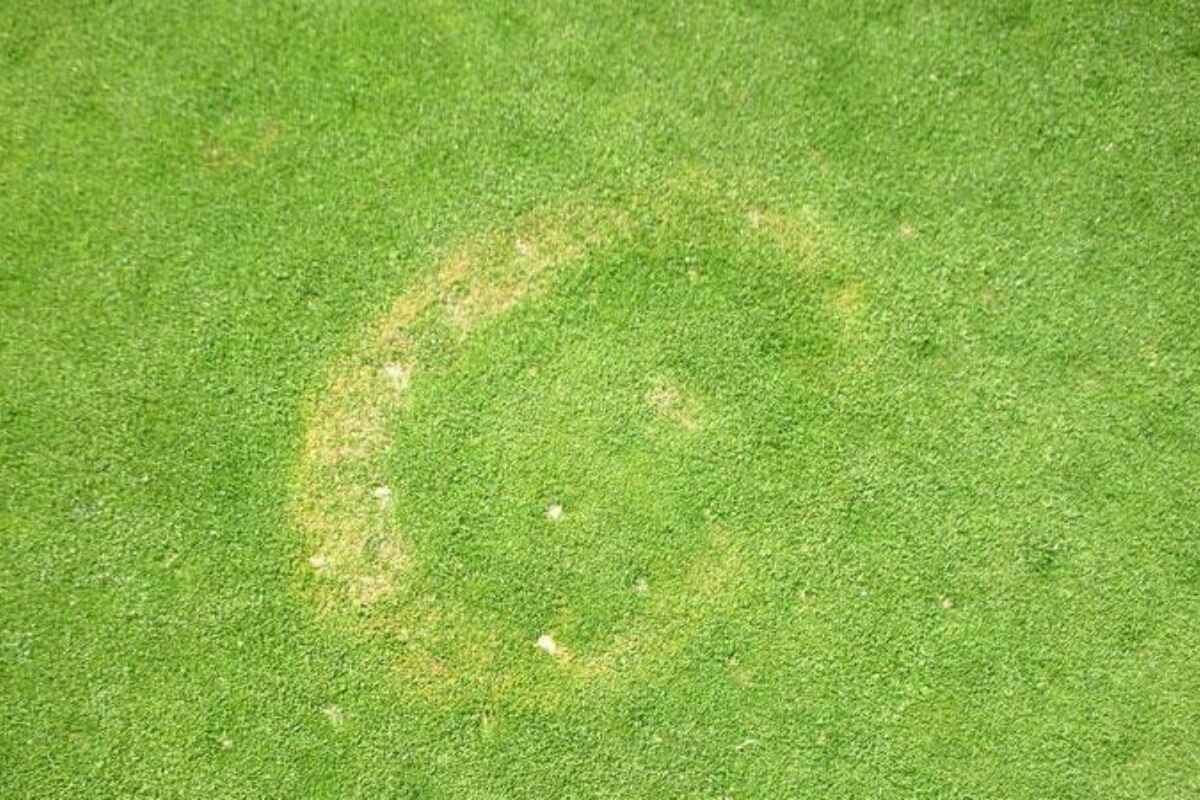
Seeing yellow patches on your beautiful, fresh lawn in the spring is heartbreaking. But don’t despair just yet. If the spots are caused by yellow patch disease, it’s not so bad. Active mainly in cool-season grasses in spring and fall, yellow patch only damages the leaves of your grass, and the turf recovers easily.
Still, don’t ignore it. Learn how to identify, control, and prevent yellow patch lawn disease because even this one can get ugly if neglected. It can also be easily confused with much worse fungal diseases, so it’s important to familiarize yourself with the symptoms of each and how to tell them apart.
- How to Recognize Yellow Patch Lawn Disease
- How to Treat Yellow Patch Disease
- How to Fix Your Lawn After Yellow Patch
- How to Prevent Yellow Patch Disease
- Turfgrasses Targeted by Yellow Patch
- Common Causes of Yellow Patch Disease
- Other Reasons Your Lawn Might Have Yellow Patches
- FAQ About Yellow Patch Lawn Disease
How to Recognize Yellow Patch Lawn Disease
In this section, we cover how to spot signs of yellow patch and how to tell them apart from other lawn diseases that could be more dangerous for your grass, including:
- Signs and Symptoms of Yellow Patch
- When Does the Yellow Patch Disease Appear?
- Yellow Patch vs. Brown Patch vs. Large Patch
- Other Spring and Fall Lawn Diseases You Can Confuse Yellow Patch With
Signs and Symptoms of Yellow Patch
Yellow patch has some nasty and scary symptoms. It covers your lawn in bright yellow, light brown, or reddish-brown rings, arcs, or patches.
From 5 inches to a few feet wide, the yellow grass circles replace green turf, ruining the looks of home lawns and golf courses for a few weeks in the spring.
Fortunately, the damage is only cosmetic. This fungal disease is mainly a foliar blight. Grass leaves wilt and die, but roots grow new shoots, and the lawn recovers once dry and warm weather comes along.
The following symptoms can help you determine whether the disease in your lawn is yellow patch or something else:
- Yellow circles in the turf: Diseased grass forms rings, arcs, and circular patches that are yellow to reddish-brown in color.
- Leaf blight: Grass blades wilt and die, but no specific leaf spots exist.
- Crown and roots: No damage to this level of the grass.
- Fungal signs: No obvious mycelium (a cottony substance that appears on top of the lawn in cases of certain fungal infections).
When Does the Yellow Patch Disease Appear?
Timing is another essential element in identifying whether it’s yellow patch you’re dealing with. Yellow patch fungus thrives in overcast, rainy, cold weather when temperatures are between 50°F and 65°F. This typically means late fall and early spring but does not exclude cold spells during northern summers or mild southern winters.
If you live in the Midwest, the conditions conducive to yellow patch are most common in March to May and September to November. But the exact period depends on your location. Your local Cooperative Extension Office can help you determine more accurately when to expect yellow patch outbreaks in your area.
Yellow Patch vs. Brown Patch vs. Large Patch
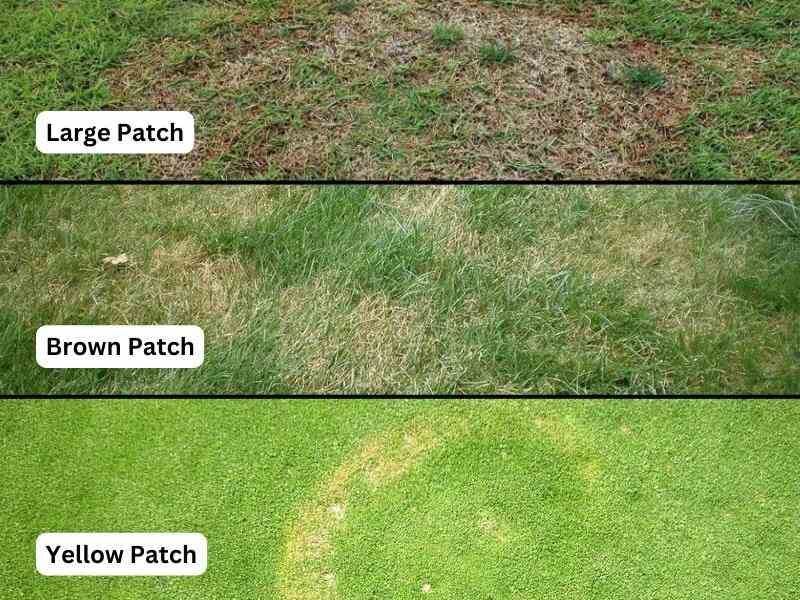
Brown patch and large patch are two other common lawn diseases that are closely related to yellow patch, but they are all distinct from each other.
Yellow patch is caused by the Rhizoctonia cerealis fungus, while brown patch and large patch are caused by Rhizoctonia solani. Part of the same family, these fungal infections have some similarities and elements that make a clear difference between them. Here’s how to know which one is infecting your turf.
| Large Patch | Brown Patch | Yellow Patch |
| Affects warm-season turf types: Centipedegrass Seashore paspalum Zoysiagrass St. Augustinegrass Bermudagrass | Affects cool-season turf types: Creeping bentgrass Tall fescue Fine fescues Perennial ryegrass Annual bluegrass Kentucky bluegrass | Affects both cool and warm-season turf types: Annual bluegrass Kentucky bluegrass Bermudagrass Perennial ryegrass Zoysiagrass Bentgrasses |
| Active period: Fall and Spring (50° to 80°F with high humidity) | Active period: Summer (75° to 90°F with high humidity) | Active period: Fall and Spring (50° to 65°F with high humidity) |
| Patch size: 1 foot to over 3 feet wide | Patch size: 4 to 12 inches | Patch size: 6 to 12 inches |
| Patch color: tan, orange, and off-color patches with an orange border and sunken center | Patch color: olive-green to brown with a gray-white smoke ring around patches with active infection | Patch color: yellow or tan-colored patches or rings; margins can be yellow or reddish-brown |
Other Spring and Fall Lawn Diseases You Can Confuse Yellow Patch With
A few other common lawn diseases active in spring and fall can be confused with a yellow patch infection. Here are the most common to consider and tips to help you figure out which one is infecting your grass.
Leaf Rust Disease
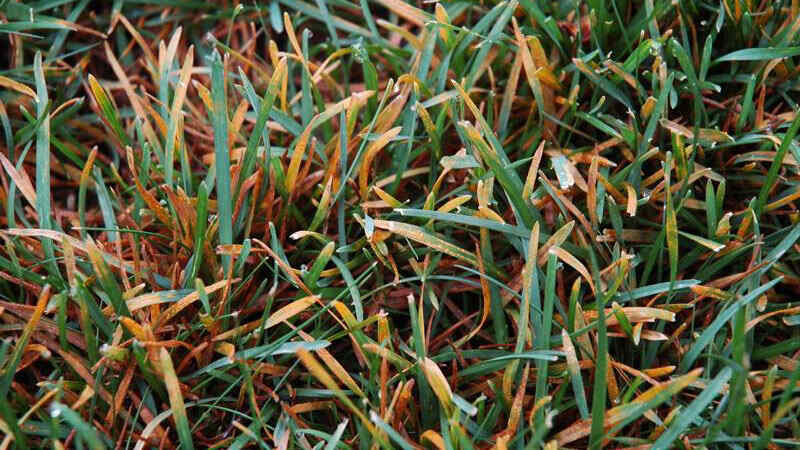
Leaf rust makes golden yellow and orange-rust patches across your lawn, which you can confuse with yellow patch symptoms. Leaf rust is active in late summer and fall while temperatures stay above 60°F and mainly attacks Kentucky bluegrass, perennial ryegrass, tall fescue, and Zoysia lawns.
An orange spore powder that collects on your shoes when walking across the lawn is the tell-tale sign of leaf rust disease. You can also distinguish it from yellow patch by the leaf lesions, which are yellowish spots aligned with the veins on grass blades.
Melting Out
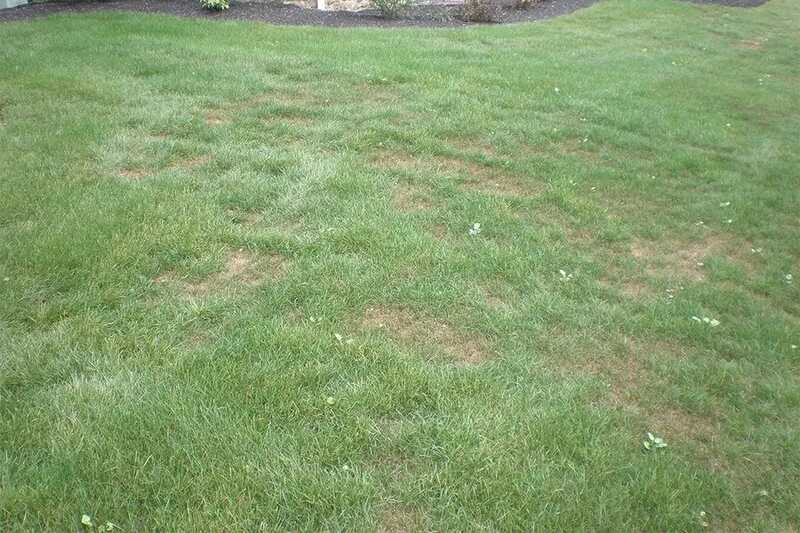
If melting out disease gets into your lawn, it causes yellow to blackish-brown patches of grass. Kentucky bluegrass, perennial ryegrass, and tall fescue are especially susceptible to this infection.
You can check for its presence by looking closely at the grass plants. Infected leaves, sheaths, and stems have circular or elongated tan spots with brown to purple edges. Melting out is a root disease. You must dig out a few damaged grass plants to check for its presence. If there, you’ll see a dark brown rot on grass roots and crowns.
Spring Dead Spot
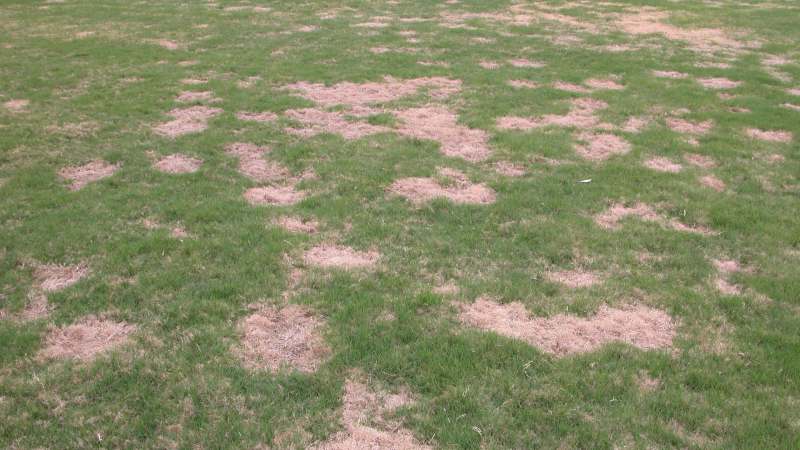
Spring dead spot is a disease that appears in cool and wet weather, affecting mainly warm-season grasses. It creates circular patches of dead grass, typically 6 to 12 inches wide. This problem mostly appears in Bermudagrass, seashore paspalum, and Zoysiagrass lawns.
Remove some damaged grass and examine it to determine if you have a spring dead spot infection or large patch disease. If it’s spring dead spot, you’ll notice that the roots, rhizomes, and stolons are dark and rotten, and the leaves don’t have clear spots.
On the other hand, large patch disease doesn’t harm the roots but causes tan to orange spots on the grass blades.
Necrotic Ring Spot (NRS)
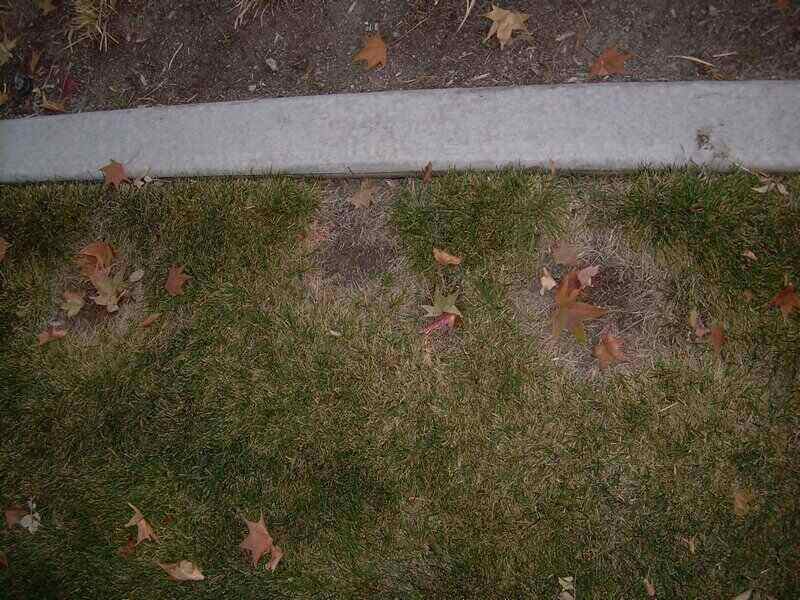
This fungal disease is active during spring and fall and usually targets cool-season grasses but can also appear in warm-season grasses like Bermuda. It causes light green patches that turn into rings of bronze to straw color with healthy, green grass in the center, giving it a frog-eye look.
This disease harms the roots, crown, and lower stems, making them turn brown or black. To differentiate it from patch diseases like yellow patch, dig out a few diseased plants and check their roots for rot.
Take-All Root Rot (TARR)
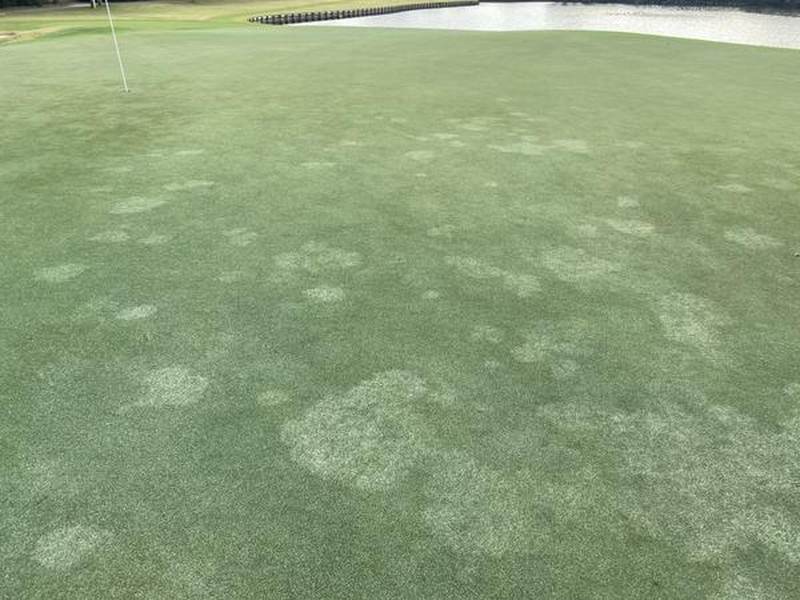
Another fungal disease attacking turf in the spring, TARR starts by causing chlorotic, light green to yellow patches in your lawn. Affected areas vary from a few inches to a few feet wide. Infected grass turns brown and dies, converting thinned patches into bare areas.
Bare patches are a tell-tale of the take-all root rot disease. This disease also awaits warmer weather and is most aggressive from late spring to summer. The stolons and rhizomes of your grass will have rot signs and dark areas, while leaves will have no distinctive lesions.
How to Treat Yellow Patch Disease
Yellow patch is a mild lawn disease that typically doesn’t require fungicides to control. Once summer arrives, hot and dry weather conditions stop it. However, you’ll still need to use special lawn care practices during infestation to limit damage and the spread of the disease.
In this section:
Cultural Practices to Treat Yellow Patch
While the yellow patch disease is dancing in your lawn, you can use a few lawn care practices to slow the spread and make the fungus’s life harder, including:
Aerate the Affected Areas
Yellow patch fungi love moist, puddling soil and thatch. Compacted ground with poor drainage is an excellent environment for them because it supports excess moisture. Put a core aerator to work and loosen the soil to improve drainage and eliminate one source of moisture.
If you aerate the entire lawn, leave the infected areas for last to avoid spreading the disease. Clean the aerator thoroughly after use.
Mow Less Often
While necessary, lawn mowing is a frequent cause of spreading lawn diseases. Reduce the frequency of mowing as much as possible while your lawn is infected. Mow the infected areas last, and clean the lawn mower thoroughly after every use to avoid re-infection and spreading.
Keep Lawn Care Tools and Equipment Clean
Rhizoctonia cerealis fungi travel from leaf to leaf by mycelium structures you can easily hitch a ride on your lawn care tools and equipment. Always thoroughly clean mowers, rakes, shoes, gloves, and any other garden tools after use.
Chemical Control of Yellow Patch
If you’re dealing with a severe infestation that’s taking over more and more of your yard every season, you’ll need to use chemical fungicide treatments to get rid of the yellow patch fungus once and for all. Lawn fungicides with the active ingredients strobilurin and flutolanil tend to have the best results.
Unless you’re a licensed professional, getting your hands on potent fungicides can be difficult and, more importantly, expensive. Some fungicides cost more than $500, and they usually come in bulk, so you’re paying for way more than you need. We highly recommend hiring a professional lawn treatment service to apply fungicides for you.
How to Fix Your Lawn After Yellow Patch
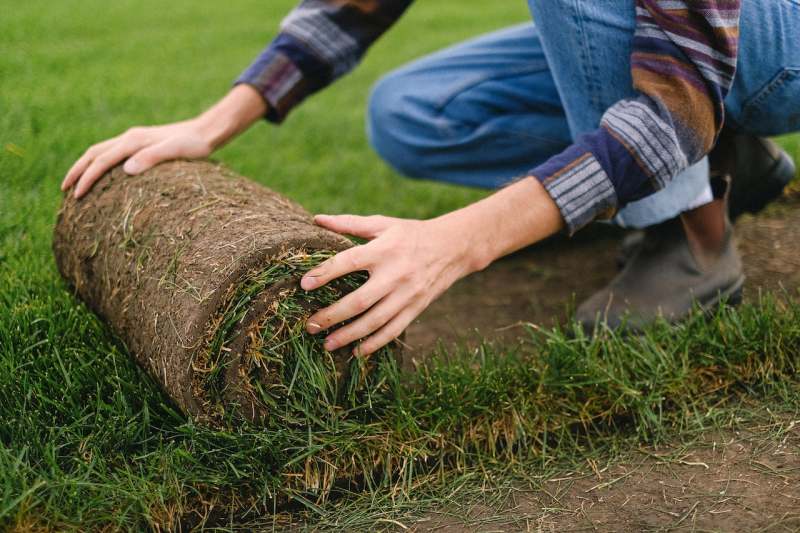
While a mild disease that often disappears when summer comes, yellow patch infection can leave your turf with some unpleasant thinning. The off-color areas also disappear slowly as the grass begins to regrow, but here are a few ways to speed up their recovery and return your lawn to its green, untouched beauty.
Apply Grass Paint
Grass paint is a non-toxic, easy-to-use substance used by homeowners and lawn care professionals to temporarily hide off-color areas in turf.
Using lawn paint is safe for the environment, kids, and pets and can help you quickly make your turf look like new while it recovers from yellow patch disease. Here are a few popular products to try:
- Endurant Green Grass Paint (Amazon)
- Ever Green Grass Colorant Concentrate (Home Depot)
- EnviroColor 32-oz Green Mulch Dye Concentrated (Lowe’s)
Install New Sod
If some patches had it more severe than others, you might consider removing the damaged grass, cleaning the area, and laying new sod. Sod costs about $0.30 to $0.83 per square foot and is a good choice for covering thinned spots immediately.
Overseed the Lawn
Once the disease is gone, you can also overseed the affected grass areas to get their thickness back. ‘Adelphi’ and ‘Cheri’ are two Kentucky bluegrass cultivars with improved resistance to the yellow patch disease you might want to try.
How to Prevent Yellow Patch Disease
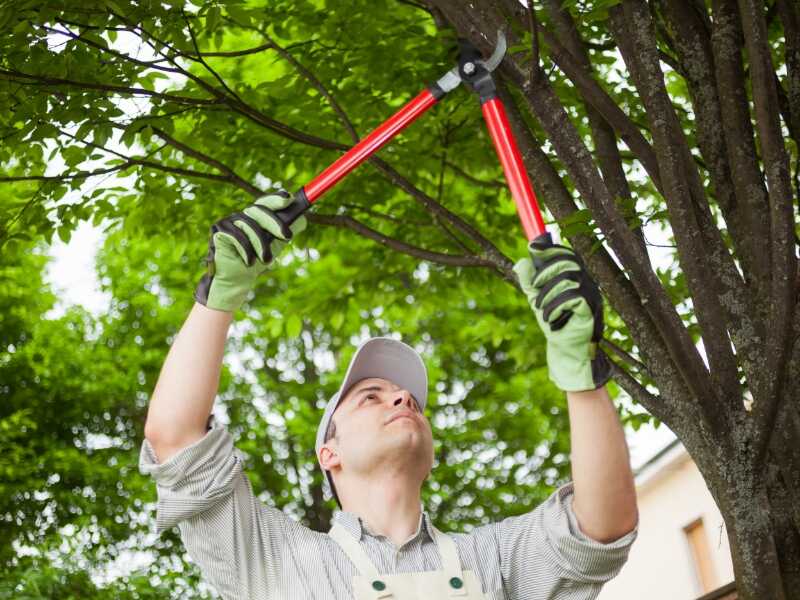
The great thing about this disease is that it stops when hot and dry weather comes along, so fungicides are generally unnecessary. But you can take a few preventive measures to limit and even stop it from reappearing altogether. It’s all in your lawn care practices.
Limit Nitrogen Fertilization to the Growing Season
Fall and spring, when yellow patch starts to activate, are crucial in the growing cycle of cool-season grasses. They start to green up or prepare for dormancy during these times, so avoid adding too much nitrogen fertilizer, even if you’re tempted to make your grass grow faster.
Applying too much nitrogen fertilizer while the turf is still barely growing or is already preparing for sleep forces it into a thin, fluffy, weak growth vulnerable to diseases and pests.
Use slow-release fertilizer and only in the amount recommended for your type of grass.
Trim Your Trees and Shrubs to Let More Sunlight In
Sunlight is a sworn enemy of fungi, so R. cerealis uses overcast weeks to have fun on your lawn under the safety of a cloudy sky.
You can’t do anything about the weather, but you can deal with other obstacles that keep light from reaching your turf.
Trees and shrubs are a major source of shade, so trim and prune generously to allow more sunlight onto your lawn. Call a professional tree trimming service if it’s too much work or the trees are too tall, and you risk falling and hurting yourself.
Plant a Shade-Tolerant Grass Type
If a building shades your lawn, it’s hard to do anything about it. Your best strategy is to remove sunlight-loving grasses like Kentucky bluegrass from your lawn.
Plant grass seeds from species that do better in the shade, like tall fescue, ryegrass, Zoysia, and St. Augustine grass.
Keep the Right Mowing Height
Mowing your lawn correctly keeps the turf stronger and more resilient to diseases. This entails:
- Cutting at the right height for grass type and season.
- Avoid mowing when the grass is wet.
- Mowing often enough to cut only a maximum of ⅓ of the grass blade each time.
Learn more from our mowing guide, including professional tips and tricks.
Water the Lawn Only As Needed
Avoid overwatering by observing your grass’s behavior and checking the soil. Water the turf when it shows signs of dryness (wilting, grayish color, doesn’t spring back when walked upon) and the topsoil is crumbly and dry.
Try to keep an early morning watering schedule. It’s the best time to ensure irrigation with low water loss through evaporation.
Another benefit is that the morning sun quickly dries any water sprinkled on grass leaves, protecting them from fungal exposure. If you water in the evening, leaves stay wet overnight, increasing the risk of fungal infestation.
Ensure Good Soil Drainage
Use core aeration and dethatch often to ensure fast water absorption into the soil. Consider installing a French drain or other drainage system across the lawn if you notice puddling zones or the yard is exposed to frequent flooding.
Clean your gutters regularly to avoid overwhelming your lawn with rainwater. Consider leveling a lawn with low spots and slopes that support puddling.
Foot traffic is a major source of soil compaction, one of the leading causes of poor drainage. If your lawn is exposed to fungal diseases, do your best to avoid walking on it. You’ll delay recovery and also risk spreading the fungus via your shoes.
Turfgrasses Targeted by Yellow Patch
Yellow patch does not affect all turfgrasses. It mainly develops in cool-season grasses when they’re entering or exiting their dormancy period. The most susceptible grasses are creeping bentgrass (making it a nuisance for golf courses using it), perennial ryegrass, tall fescue, annual bluegrass, and, in a less severe manner, some Kentucky bluegrass varieties.
Cases of yellow patch infestation in Bermudagrass and Zoysiagrass have also been known to happen. If you have Bermuda or Zoysia on your lawn, keep yellow patch on the list of lawn diseases to watch for.
Common Causes of Yellow Patch Disease
The fungal pathogen causing the yellow patch disease is Rhizoctonia cerealis, a close relative to Rhizoctonia solani, the fungus behind brown and large patch disease. Like any foliar fungus in your lawn, R. cerealis requires favorable environmental conditions to infect, grow, and multiply.
Here are some environmental conditions and cultural practices that can cause the yellow patch fungus to develop and spread in your lawn.
Excessive Moisture
Foliar fungi require 10 consecutive hours of leaf wetness for a few consecutive days to start acting out.
They will mostly propagate during wet weather, with heavy rainfall and dew in the morning. Late afternoon or evening irrigation and overwatering also encourage the yellow patch fungus.
Thick Thatch Layer
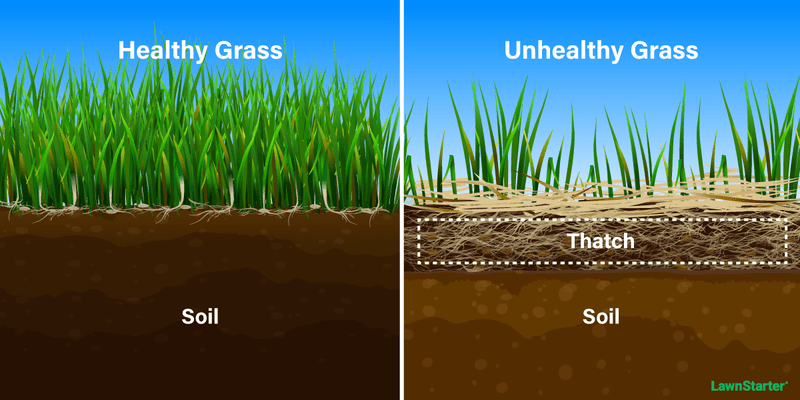
Guess where the fungi like to hide, shelter, and wait for suitable growing conditions — your thatch layer is their home sweet home.
When it gets over 0.5 inches thick, thatch holds moisture long enough to provide excellent living and dormancy conditions for fungal pests.
Dead leaves and other types of organic debris left on the lawn are also part of the fungal housing network. That’s why neglected turf is the first to “bloom” with fungal infestations.
Low Sunlight Exposure
Fungi love the shade, and the Rhizoctonia cerealis is no different. It grows and spreads faster in lawn areas that don’t get enough sunlight because of a dense tree canopy, shrubs, or tall buildings.
Downspouts in Your Lawn
Nothing says puddling water like downspouts in your lawn. Whether collecting rainwater or irrigation runoff from all over the yard, they’re a perfect location for yellow patch and other fungal diseases to set up shop.
Compacted Soil
Another factor favoring this fungal disease is compacted soil. Similar to downspouts, compaction nurtures puddles, and areas with such soil have higher surface moisture during rainy seasons.
Close-Mowed Turf
Setting the lawn mower blades too low during spring and fall leaves the grass plants with fewer resources to fight diseases or pests and to heal the open cuts. Yellow patch fungus often develops in scalped turf and lawns mowed under 0.5 inches during fall and spring.
Overfertilization
Adding nitrogen to lawns infected by dollar spot and red thread helps prevent and treat the disease. But yellow patch infestation gets more severe in over-fertilized lawns.
Thin, soft grass, overgrown due to excess nitrogen added during fall or spring, is more vulnerable to this fungus.
Other Reasons Your Lawn Might Have Yellow Patches
Rhizoctonia cerealis is not the only cause of yellow spots on your lawn. Here are a few other possible problems to consider when you see yellow grass where there used to be nothing but green.
Turf Pests
Grubs, chinch bugs, sod worms, armyworms, and other nasty lawn pests can turn your grass dry and off-color. They damage roots and stems, causing the turf to wilt, turn tan, brown, and eventually die.
To check if you have pests on your lawn, use the drench test, also called the soap test:
- Dissolve two to four tablespoons of liquid soap in one gallon of water.
- Mark one square foot of yard, including healthy and damaged grass.
- Spread the solution as evenly as possible.
Any insects in the soil will come to the surface. For dry soils, you might need two gallons of solution.
Dog Urine
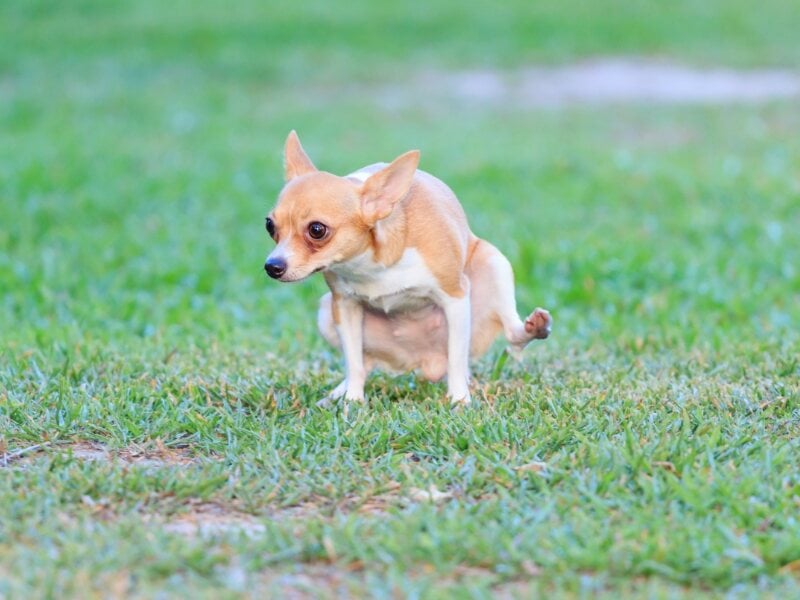
Dog urine damages the turf due to its high nitrogen content, which burns the grass. Grass plants are severely damaged if your pet has a favorite place on the lawn where it keeps peeing. Once the damage is done, remove the dead grass and a topsoil layer a few inches thick, replace it with some healthy soil, and reseed the turf.
Train your dog not to pee on the lawn to prevent further dead patches. Or, at least, to use a different spot every day, avoiding a high concentration of nitrogen in a single spot.
Nutrient Deficiency
Nitrogen and iron are the main nutrients that can cause yellowing if deficient in the soil. The turf takes a light green color and grows slower. Grass leaves turn yellow or brown at the tips, and clover often occurs in thinned spots.
Yellowing from nutrient deficiency rarely forms circular patches and typically spreads somewhat evenly across the lawn. Before adding any fertilizers to fix it, take a soil test. It’s the best way to amend the soil properly and avoid other imbalances.
Overwatering and Underwatering
If you water the lawn too much or too little, it will begin to yellow and wilt at some point. Overwatering can rot the grassroots, slowly killing the plants. Underwatering prevents nutrient absorption, slowly drying the grass plants.
Compacted Soil
Besides being a factor that encourages fungal diseases, compacted soil makes it hard for grassroots to develop and access nutrients and moisture in the ground. Deprived of precious food and water, grass wilts and turns yellow.
Blunt Lawn Mower Blades
Keep your lawn mower blades sharp. Blunt blades tear up grass leaves, making the cuts heal slower. The tips look dry and yellowish until the turf recovers.
FAQ About Yellow Patch Lawn Disease
Why Are Patches of My Lawn Turning Yellow?
There can be a lot of reasons for yellowing grass spots appearing on your lawn. The most common to consider are:
- Grubs
- Chinch bugs
- Fungal lawn diseases
- Drought
- Compacted soil
- Nitrogen or iron deficiency
- Nitrogen excess
- Overwatering
- Drought stress
- Close-mowing
How Do You Treat Yellow Grass Fungus?
Yellow patch fungus does mostly cosmetic damage, and fungicides are rarely needed. The best treatment is a good lawn care routine with proper watering, mowing, fertilization, and soil management.
Can You Reverse Yellow Grass?
Yes, yellow grass is often the result of factors that can be repaired, like overwatering, drought, soil compaction, nutrient deficiency, overfertilization with nitrogen, mowing too short, etc. Once you spot the motive and correct the problem, you’ll enjoy a green, healthy lawn again.
When to Call a Lawn Treatment Professional
The best time to call a lawn care professional is when you notice the first signs of infection. The faster you determine the disease targeting your lawn, the easier, more effective, and less costly the treatment will be.
LawnStarter can connect you with the top lawn treatment pros in your area in just a few minutes through our online platform or mobile app. LawnStarter pros are licensed, insured, and vetted, and they live right in your community. Get a free quote on lawn disease treatment and more than 30 other outdoor services today.
LawnStarter participates in the Amazon Services LLC Associates Program, an affiliate advertising program. LawnStarter may earn revenue from products promoted in this article.
Main Photo Credit: NC State Cooperative Extension